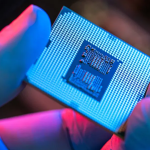
Introduction: In a bold move towards advanced security measures, American Express is stepping into the realm of biometrics. This article explores the landscape of biometric technology, American Express’s foray into this innovative space, and the potential implications for the future of secure financial transactions.
Section 1: The Biometric Revolution
Rise of Biometric Authentication: Biometric authentication, utilizing unique physical or behavioral traits for identity verification, has seen a surge in popularity across various industries. Fingerprint scans, facial recognition, and even voice authentication are becoming integral to modern security systems.
Enhancing Security and Convenience: The allure of biometrics lies in its ability to provide heightened security while offering a seamless and convenient user experience. Users no longer need to remember complex passwords; instead, their unique biological markers become the key to accessing sensitive information.
Section 2: American Express’s Biometric Initiatives
Fingerprint Authentication: American Express has ventured into biometrics with fingerprint authentication for certain card transactions. Cardholders can now use their fingerprint as a secure and personalized method of verifying their identity.
Exploring Facial Recognition: The credit card giant is also exploring the realm of facial recognition technology. This could potentially allow users to make secure transactions by simply confirming their identity through a quick facial scan.
Section 3: The Benefits of Biometric Security
Unparalleled Security: Biometric authentication offers a higher level of security compared to traditional methods like passwords or PINs. The uniqueness of each individual’s biometric markers makes it exceedingly difficult for unauthorized access.
User-Friendly Experience: As technology evolves, users are increasingly seeking a frictionless experience. Biometrics provide a seamless and user-friendly authentication process, eliminating the need for memorizing and inputting passwords.
Section 4: Potential Challenges and Concerns
Privacy Considerations: The implementation of biometrics raises valid concerns about user privacy. American Express, like other companies, must address these concerns transparently, ensuring that user data is handled responsibly and ethically.
Technical Vulnerabilities: While biometrics offer robust security, they are not immune to technical vulnerabilities. American Express must continuously invest in research and development to stay ahead of potential threats and ensure the resilience of their biometric systems.
Section 5: The Future of Secure Transactions
Industry-Wide Adoption: American Express’s exploration of biometrics may signal a broader trend in the financial industry. The successful integration of biometric authentication by major players could pave the way for industry-wide adoption.
User Acceptance: The success of biometrics in finance hinges on user acceptance. American Express’s careful navigation of user sentiments and feedback will be instrumental in shaping the future landscape of secure financial transactions.
Section 6: What Lies Ahead
Continuous Innovation: As technology evolves, American Express will likely continue to innovate in the realm of security. Whether through advancements in biometrics or exploring other cutting-edge technologies, staying at the forefront of security measures will be paramount.
User Education and Communication: American Express must prioritize user education and communication to ensure that cardholders understand the benefits, security measures, and privacy considerations associated with the integration of biometrics.
Conclusion: American Express’s venture into biometrics marks a significant stride toward the future of secure financial transactions. The adoption of fingerprint authentication and exploration of facial recognition underscore the company’s commitment to both security and user convenience. As biometric technology continues to evolve, American Express is poised to play a pivotal role in shaping the landscape of secure and seamless financial interactions, setting a standard for the industry to follow.













